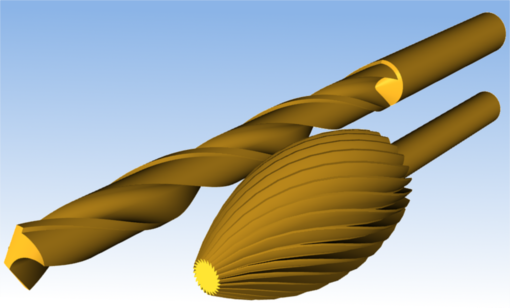Modeling Algorithms
Modeling Algorithms containing a vast range of geometrical and topological algorithms.
Modeling Algorithms module groups a wide range of topological and geometric algorithms used in geometric modeling. Basically, there are two groups of algorithms in Open CASCADE Technology:
- High-level modeling routines used in the real design;
- Low-level mathematical support functions used as a groundwork for the modeling API;
- Low-level geometric tools provide the algorithms, which:
- Calculate the intersection of two curves, surfaces, or a curve and a surface;
- Project points onto 2D and 3D curves, points onto surfaces and 3D curves onto surfaces;
- Construct lines and circles from constraints;
- Construct free-form curves and surfaces from constraints (interpolation, approximation, skinning, gap filling, etc);
- Low-level topological tools provide the algorithms, which:
- Tessellate shapes;
- Check correct definition of shapes;
- Determine the local and global properties of shapes (derivatives, mass-inertia properties, etc);
- Perform affine transformations;
- Find planes in which edges are located;
- Convert shapes to NURBS geometry;
- Sew connected topologies (shells and wires) from separate topological elements (faces and edges).
Top-level API provides the following functionality:
- Construction of Primitives:
- Boxes;
- Prisms;
- Cylinders;
- Cones;
- Spheres;
- Toruses.
- Kinematic Modeling:
- Prisms - linear sweeps;
- Revolutions - rotational sweeps;
- Pipes - general-form sweeps;
- Lofting.
Shapes containing pipes with variable radius produced by sweeping
- Boolean Operations, which allow creating new shapes from the combinations of source shapes. For two shapes S1 and S2:
- Common contains all points that are in S1 and S2;
- Fuse contains all points that are in S1 or S2;
- Cut contains all points in that are in S1 and not in S2.
See Boolean Operations User's Guide for detailed documentation.
- Algorithms for local modifications such as:
- Hollowing;
- Shelling;
- Creation of tapered shapes using draft angles;
- Algorithms to make fillets and chamfers on shape edges, including those with variable radius (chord).
- Algorithms for creation of mechanical features, i.e. depressions, protrusions, ribs and grooves or slots along planar or revolution surfaces.
Please, see the details in Modeling Algorithms User's Guide.
See also: E-learning & Training.


